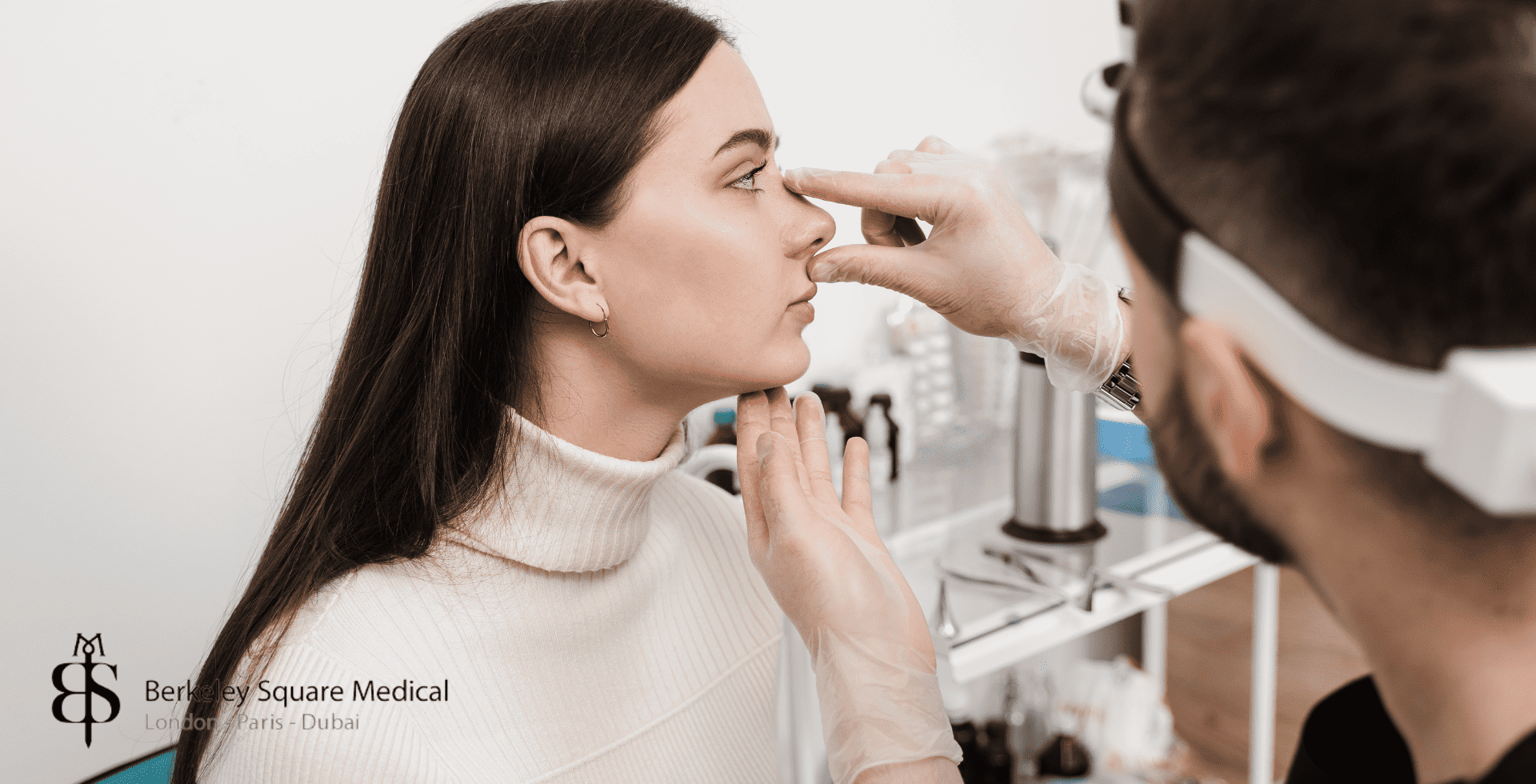
When you have nasal surgery to improve the appearance of your nose, one of the things that can go wrong is an overly retracted columella.
A retracted columella is when the tissue under the nose appears pulled up or tucked in. It can make the nose look too short and is sometimes caused by rhinoplasty, genetics, or injury. In many cases, it can be corrected with a small secondary surgery once healing is complete.
In this blog post, we will discuss what causes retracted columella, how much time you should give for your nose to heal after rhinoplasty, and what can be done to correct it if needed.
A retracted columella makes the nose look too short or pulled upward, often exposing more of the nostrils than normal.
It can be caused by genetics, trauma, or rhinoplasty, especially if cartilage was over-trimmed or the incision placement was too high.
Mild retraction may improve on its own, but most cases require surgical correction for lasting results.
Wait at least 6 months after surgery before considering revision, as swelling and healing can affect the columella’s appearance.
Columellaplasty or graft-based revision (using cartilage from the septum, ear, or rib) can restore natural contour and support.
The columella is the thin strip of tissue that separates the nostrils. (1) It is located at the base of the nose and extends from the tip of the nose to the upper lip.
The columella can be seen on both sides of the nose, but it is most visible when looking at someone from the front.
It can be deformed in two ways. The columella is retracted when too little of it is showing, and hanging when there is too much of it showing relative to the nostrils.
A retracted columella makes the nose appear too short for the face.
Retracted columella can occur naturally, as a result of the person’s genetics. It is most common among people of Asian or African descent.
Another possible cause is physical trauma, perhaps the result of a sports accident.
Finally, there are a number of factors that can contribute to the condition after rhinoplasty surgery.
These can happen when the surgeon is inexperienced or if the patient has particularly thick skin. Some of the most common reasons include:
The healing process after rhinoplasty can take up to a year. However, it is usually only the first few months when patients see the majority of the changes in their noses.
This means that if you are concerned about your retracted columella, it is best to wait at least six months before considering revision surgery.
Columellaplasty is very much a fine-tuning operation to improve the appearance of the columella and the balance of your nasal features. (1)
Your facial plastic surgeon needs to look at your nose during a consultation and assess the treatment options on a case-by-case basis.
If the condition is the result of a previous rhinoplasty surgery, your doctor needs to be certain that enough time had elapsed for the nose to completely heal.
They will also need to take into account your skin type and the thickness of your nasal tissues.
In some cases, the correction of the nose tip might be enough to restore balance to the appearance of the nose.
The most common surgical treatment involves the use of a graft. This can be cartilage or tissue from the ear, ribs, or nasal septum of the patient.
Our consultant plastic surgeon, Dr. Taimur Shoaib has an extensive experience in secondary or revision rhinoplasty, correcting the results of failed primary nose surgeries by less experienced surgeons.
Book a consultation with us today to have a thorough discussion of your options.
A retracted columella is when the strip of tissue between the nostrils appears pulled upward or tucked in. This can make the nose look too short and expose more of the nostrils, especially from the side view.
Yes. A retracted columella can occur after rhinoplasty if too much cartilage is removed, incisions are placed too high, or healing causes tissue to contract. It may also result from scarring or poor support after surgery.
It can be, but not always. Mild cases may improve as swelling subsides. More noticeable retraction often needs revision surgery to rebuild support and restore balance to the nose.
Most surgeons recommend waiting at least 6 to 12 months after your original rhinoplasty. This allows swelling to fully resolve and the tissue to heal before planning a revision.
Surgical correction often involves columellaplasty or the use of cartilage grafts taken from your nasal septum, ear, or rib. The goal is to restore projection and create a balanced nasal contour.
In very mild cases, dermal fillers may provide temporary improvement by adding volume beneath the nose. However, surgical correction is usually more effective and long-lasting.
Most of the time, a retracted columella is a cosmetic concern. But in some cases, it may change airflow or nasal valve function, especially if the structure of the nose has been weakened.